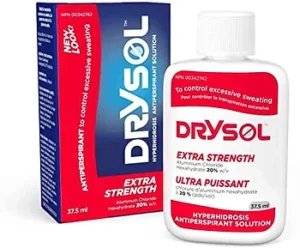
Blog
Download Our Hangboarding Manual
Secret Skincare Routine for Climbers

Have you ever had a climbing training session where you felt like you were floating up the wall (low gravity days, as we call them) and could climb forever…except your skin had other ideas? Yup…THE WORST. I mean, I can accept ending a session when my biceps are too fatigued, when my lats are disengaging, or even when my psyche dwindles down. What I can’t accept is when I’m really psyched to climb hard but can’t because my fingertips hurt too much. Talk about a buzzkill.
We need to be proactive when it comes to skincare. Climbing outside a bunch isn’t enough on its own. I want to share with you my favorite tips & tricks for managing thin skin, especially during the hot and humid summers. Disclaimer: this is NOT a sponsored ad and these are products I use daily, because they work (besides, why would an electric pumice stone company want to sponsor a rock climber!)
So here, in no particular order, are my favorite skincare hacks:
1. Electric Pumice Stone ($25)

As climbers, we tend to develop thick calluses on our fingers and palms that are at risk of tearing off and turning into what we call flappers. No thank you. To prevent this from happening we use sandpaper and sandpaper blocks to file down those calluses, as well as general wear & tear during climbing sessions. The goal isn’t to get rid of them (calluses are a good thing!), but rather to thin them out a bit, so there’s a lower chance of them ripping. And while sandpaper gets the job done, it’s a bit of a hassle and takes a while to get through all those layers of skin. Well I’m here to tell you that sandpaper blocks are a thing of the past. Goodbye sandpaper, hello electric pumice stone! Sure, it costs a bit more than a block, but it just works exponentially better (and faster). As you can see, this particular one comes with three different attachments with different sandpaper grits. While I’m a tad scared of using the coarsest, the fine + medium grits work perfectly. I use it both during and after climbing sessions, especially if I am climbing on sharp holds that immediately start to wear out my skin. By sanding down the irregularities on my fingertips I’m ensuring they don’t progress into splits. The best part is, it only takes 5-15 seconds. Plus the device is rechargeable, so you never
2. Drysol Extra Strength ($32.95)

Ah, the hotly debated Drysol. Two notes before I pitch this to you: 1) I have read up extensively on the side effects associated with using aluminum chloride and have found no convincing evidence against it, but do your own research; 2) Although they are both antihydrals, Drysol is NOT the same as the antihydral you would buy off Foosball.com (the active ingredient in which is methenamine) and does NOT have the same effect on your skin. I’ve tried both (the Foosball stuff makes your fingertips slick and glassy). So what exactly is an antihydral? It’s a skin-drying agent that is generally used to prevent excessive sweating. The relevance to climbing is that we can use it on our fingertips a couple times a week when we are in-season or climbing outside a lot to prevent tearing and aid with callus development. Generally, the drier your fingertips are the longer they will last. I’ve found this particularly useful on multi-day trips, where I am climbing several days in a row. It makes a huge difference! Especially when it is hot and humid outside.
Here’s my own Drysol routine:
- Use 1-2x per week, no more than that, otherwise you risk splitting your skin
- Do NOT apply to areas that have cuts/splits/open wounds
- Before bed, dab a bit onto each finger tip and onto the palm of your hand
- Try not to touch anything afterwards, especially your face
- First thing in the morning, wash your hands with soap and water
- You’ll notice increased dryness after just a couple uses
- Again don’t overdo it, dry cracked skin is also no good for climbing
Simple as that! One bottle usually lasts a year.
3. Good Quality Tape
Two options here:
Metolius Climbing Tape ($3.95)

Leukotape P ($17.99 for 2)

Let’s be real. You can take all the preventative measures in the world, but at some point your skin will tear or split or flapper or whatever else. It’s as inevitable as death and taxes. We need to be prepared for when that does happen. As a lot of you may have come to realize, just any old athletic/medical tape won’t do the trick, because it is not sticky enough and will peel off after one or two climbs. Fortunately, there are stickier alternatives available from both climbing and medical brands. The Metolius rolls are my go-to as they are cheap, colorful, and sturdy. I save the pricier Leukotape P for thinner and more fingery climbs, particularly outdoors. It is slightly stickier and stretchier, and I find that it lasts the longest of any tape I have tried. However, it is a good deal more expensive and the Metolius rolls work perfectly fine for gym climbing. I split both rolls into four equal sections so I can use the thinner strips on my fingers. Both are relatively easy to separate and rip by hand. Actual taping technique is beyond the scope of this post, so I’ll save it for a later one (-:
4. Liquid Bandage ($5.99)
For when a strip of tape isn’t enough and the split/tear is either bleeding through or hurts to climbing on. Although liquid bandage has been around forever, I’ve only discovered it recently. It’s a great alternative to superglue, as it is gentler on the skin and works almost as well (that being said, I will still use a dab of superglue for particularly bad abrasions). Two coats followed by a careful application of tape should do the trick in most situations, and will hold everything intact. Even if you don’t need it, it will still feel like extra protection and allow you to crank harder and engage your fingers more. Just make sure you let the liquid bandage dry completely before applying tape.

And there you have it…my favorite skin hacks! Hope this is a good starting point in your skincare journey. Comment below if you have any questions. For online climbing coaching, check out: https://www.parfenovtraining.com/online-training

